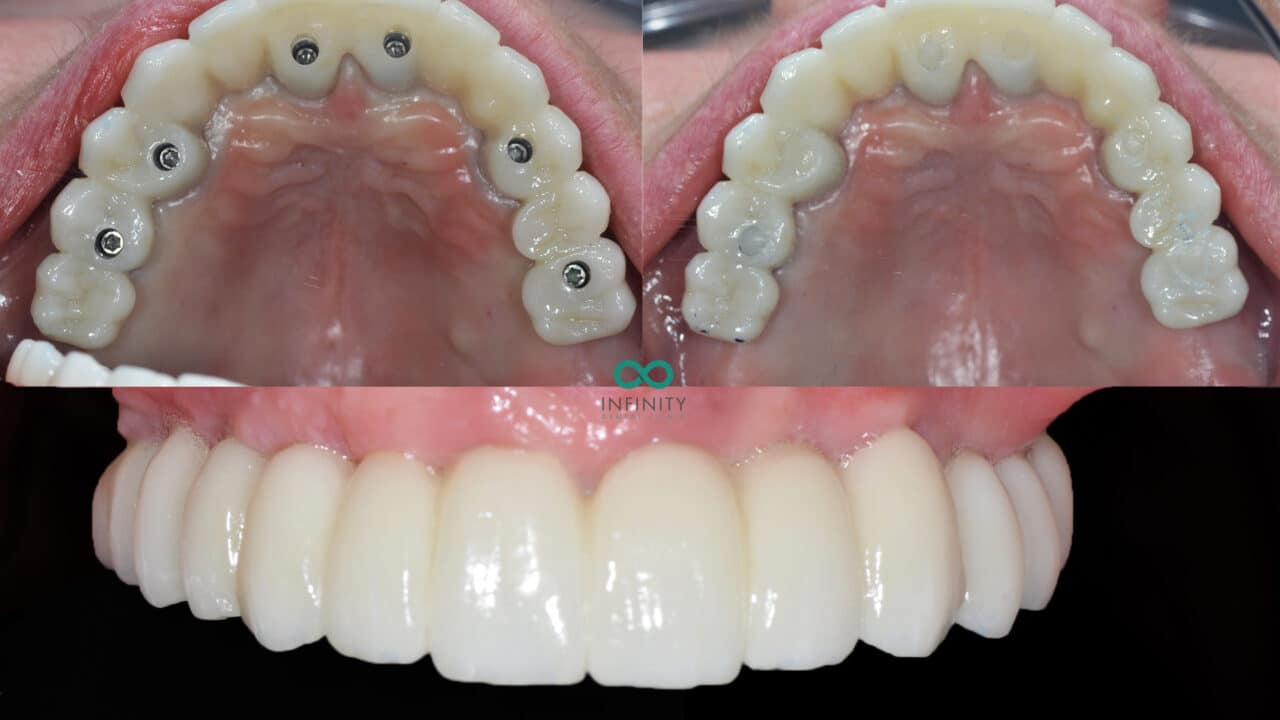7 Simple Techniques For Dental Sense
7 Simple Techniques For Dental Sense
Blog Article
Dental Sense Things To Know Before You Get This
Table of ContentsThe Best Guide To Dental SenseDental Sense for DummiesThe 6-Minute Rule for Dental SenseIndicators on Dental Sense You Should Know
are medical tools surgically dental implanted right into the jaw to bring back an individual's capacity to chew or their appearance. They supply support for artificial (fake) teeth, such as crowns, bridges, or dentures. When a tooth is lost due to injury or illness, an individual can experience complications such as quick bone loss, defective speech, or modifications to eating patterns that cause discomfort.Oral implant systems are composed of an oral implant body and dental implant abutment and may additionally consist of a joint fixation screw. Kids dental. The oral implant body is surgically placed in the jawbone instead of the tooth's root. The dental implant abutment is normally connected to the implant body by the abutment fixation screw and extends through periodontals right into the mouth to support the affixed man-made teeth
(https://linktr.ee/dentalsense1)Structure of The Dental Implant System choosing oral implants, speak with your oral supplier regarding the possible benefits and risks, and whether you are a prospect for the procedure. Things to take into consideration: Your total health is an important element in identifying whether you are a great candidate for dental implants, for how long it will certainly require to recover, and the length of time the dental implant might remain in location.
Smoking may influence the recovery procedure and reduce the long-lasting success of the dental implant. The recovery procedure for the implant body might take numerous months or longer, throughout which time you generally have a short-term joint instead of the tooth. the dental implant treatment: Thoroughly follow the dental health guidelines provided to you by your oral supplier.
An Unbiased View of Dental Sense
Implant failure can result in the requirement for another medical treatment to fix or change the dental implant system. Restores the capacity to chew Restores aesthetic appearance Aids maintain the jawbone from shrinking because of bone loss Protects the health and wellness of the bordering bone and periodontals Helps keep adjacent (neighboring) teeth steady Enhances quality of life Damage to surrounding all-natural teeth throughout dental implant positioning Injury to the surrounding cells during surgical treatment, such as sinus opening Injury throughout surgery (for instance, crack of bordering jawbone) Insufficient function, such as feeling like the teeth do not attack with each other normally A feeling that the tooth is loose or twisting in place resulting from a joint screw loosening Implant body failing (looseness of the dental implant body) because of systemic infection, which may be most likely in patients with uncontrolled diabetics issues because of regional infection in bone and gum tissues supporting the implant body as a result of delayed healing, which might be more likely in people who smoke Problem cleaning the periodontals around the dental implant, leading to bad oral hygiene Unattended gum illness Post-surgical tingling because of nerve impingement or damage Always alert health care service providers and imaging specialists that you have dental implants before any type of magnetic vibration imaging (MRI) or x-ray treatments.
FDA is not aware of any type of damaging events reported for MRI or x-ray treatments with oral implants. Oral implants systems are commonly constructed from materials that adhere to global agreement requirements of the International Organization for Standardization (ISO) or ASTM International. These standards have details of what makes a secure product.

An oral implant is a framework that replaces a missing tooth. With screw-like devices, the surgeon inserts an implant right into the jawbone, and it acts as a support for an artificial tooth, called a crown.
Excitement About Dental Sense
Some individuals are not eligible for oral implant surgery. It is for dental doctors to operate people with: acute illnessuncontrollable metabolic diseasebone or soft cells illness or infectionIf these concerns are fixed, a person can have the surgical procedure. In, oral surgeons refrain from operating on individuals with: If individuals with any of the above undertake dental implant surgical procedure, there is a greater threat of the implant stopping working.

Oral dental implant surgery is a personalized process. It's not the very same for everyone. The following offers a basic overview of what you can anticipate your dental professional, oral surgeon, periodontist or prosthodontist to do: Put the implant operatively. Offer you time to heal. Connect the blog post and final crown, bridge or denture.
Next, your cosmetic surgeon will meticulously put the oral implant right into your jaw. If your implant is near the front of your mouth, your dental practitioner will make a momentary tooth for you to wear until you heal.
The Facts About Dental Sense Uncovered
Your service provider can tell you what to expect in your situation. Throughout the recovery stage, your jawbone should fuse to the oral implant. This process, called osseointegration, is vital for security and long-term success. This process can take anywhere from three to nine months. In some cases, it may take longer.
When your dental implant heals, your dental practitioner can attach the abutment (little connector blog post) and your last remediation (crown, bridge or denture). This generally takes about one hour to finish and may need a second small surgical treatment. You should not feel any kind of discomfort throughout your oral implant treatment since your copyright will make use of medication to numb your periodontals.
Report this page